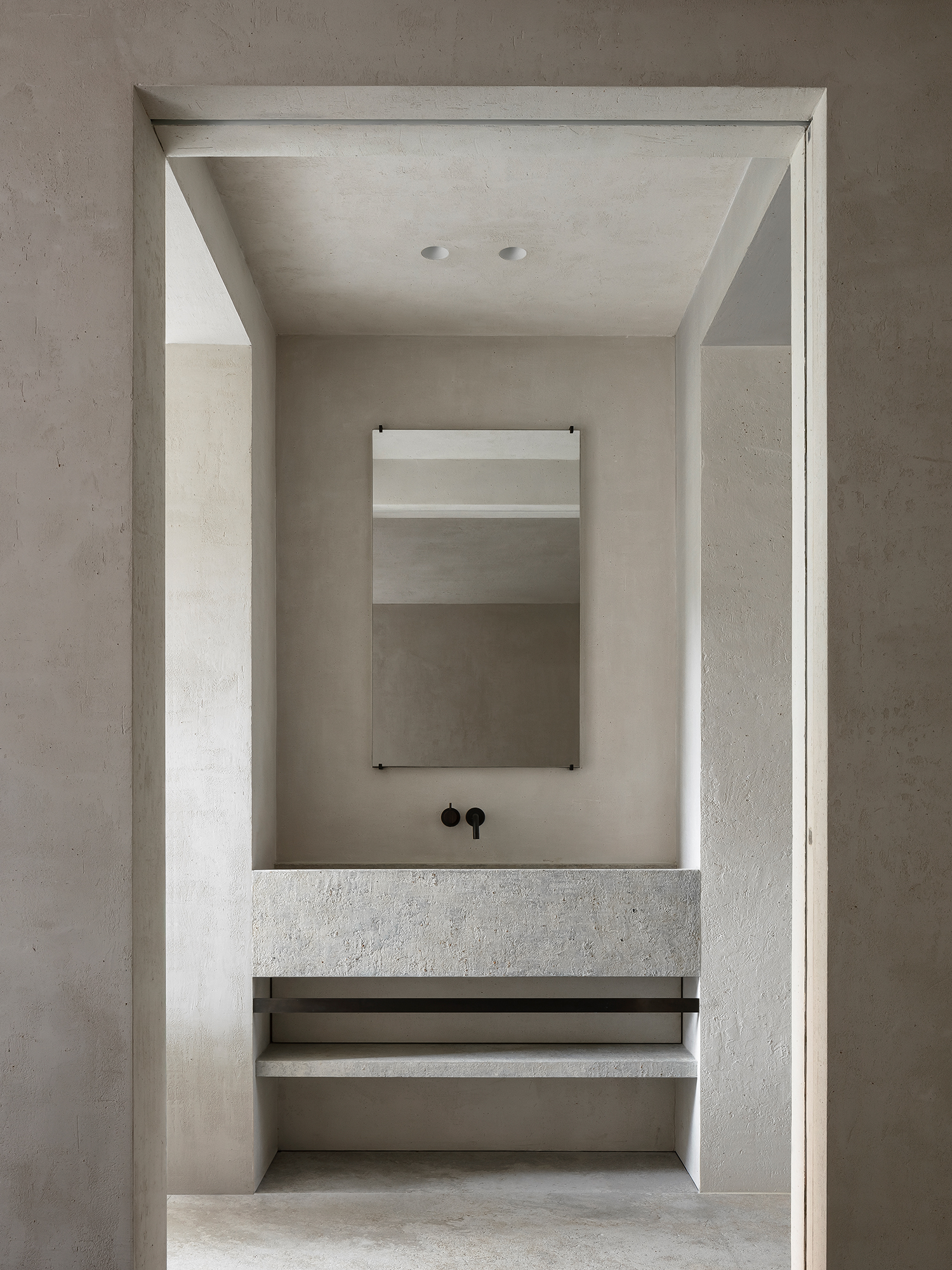

Gentle Giant
Words by Harriet Thorpe
Using layers of natural materials, fifties furniture and architectural history, interior designer Marc Merckx has brought soul to a severe modernist apartment in Antwerp.
The modernist architects of the 20th century were a stern lot. Mies van der Rohe’s ‘less is more’ saw interiors stripped back to the bare essentials. Le Corbusier built ‘machines’ for living in. Gerrit Rietveld found wealth in sobriety, and Adolf Loos associated ornament with crime. In Belgium, Léon Stynen was a fan of flatness.
Interior designer Marc Merckx might have a lot in common with these modernist architects – he is a rationalist, a minimalist and a functionalist, but his work doesn’t feel stern. When met with the interior renovation of a modernist residential building in Antwerp, designed by Stynen’s apprentice Paul Meekels – a heavy slabbed concrete design with wide windows – Merckx’s response was to bring in warmth, atmosphere and soul.


Marc Merckx
“I always like to use materials that have some kind of soul or body – warm in one aspect and timeless in another. We always age the materials and soften up the surfaces to give extra depth and dimension. I see the role of an architect as an artisan. Craftsmen are really important for the work that I do, and a lot of architects in Belgium. The relationship between ourselves and the suppliers, and contractors, is very important.”
Merckx studied interior design at the Academy of Fine Arts Sint-Niklaas part-time while working as an art director in graphic design. He was discovered by architect Vincent Van Duysen, who employed him for the next 15 years: “The most important thing I learnt from Vincent was a sense for materials – understanding materiality, taking a textural approach, and seeing materials with less of an architectural eye and more of a decorator’s eye,” he says. Then in 2012, in pursuit of the satisfaction of working for himself, Merckx set up his own studio.
Merckx’s art is designing, combining and layering, using an array of tools and working with collaborators along the way. Instead of being formulaic, it is phenomenological: “I always work very intuitively without a theoretical approach. It all comes from a gut feeling that feels good. Everything has been designed and thought out once already, so it’s about
how you re-interpret and translate. It’s not about being the one and only designer who comes up with something magical and unique. The language you make for yourself, that’s the most important thing.”



